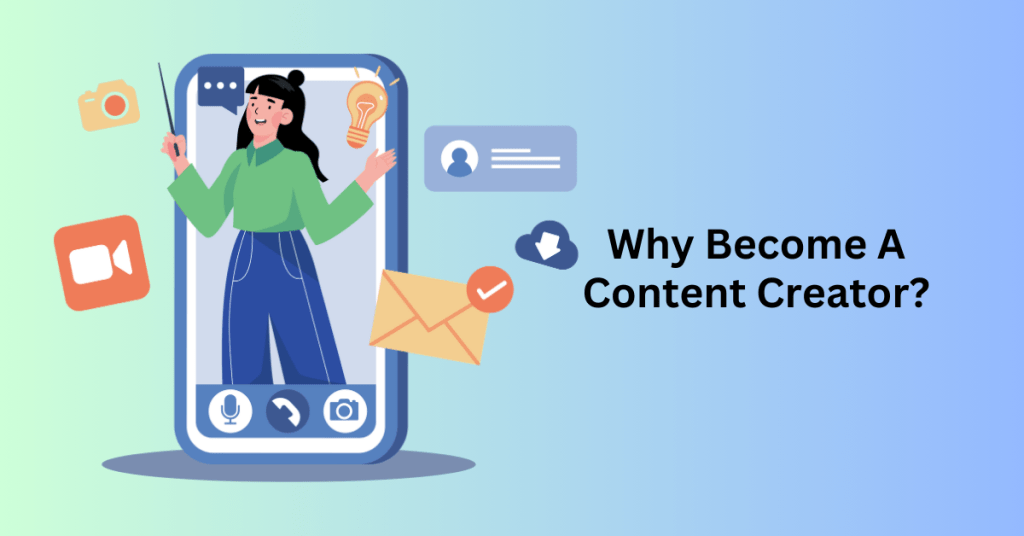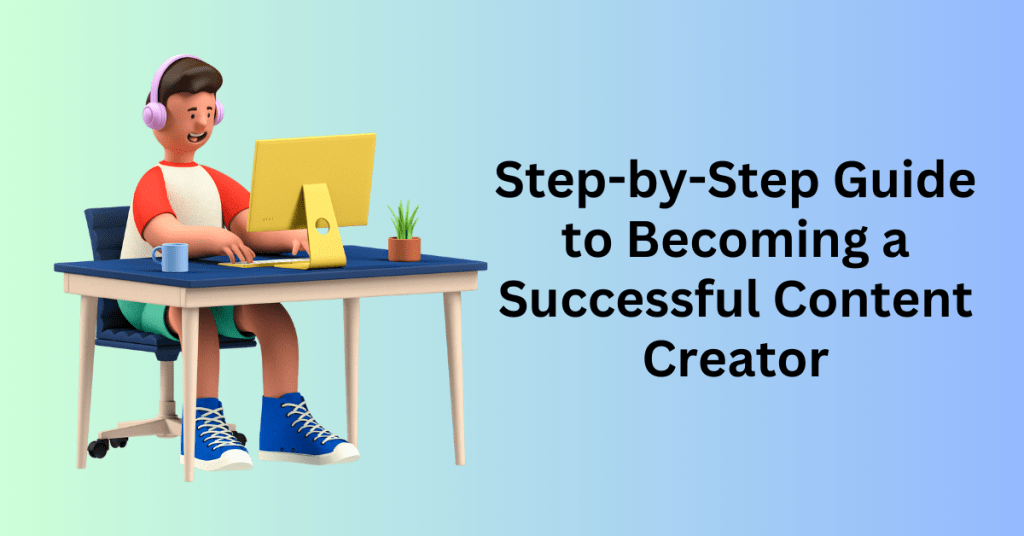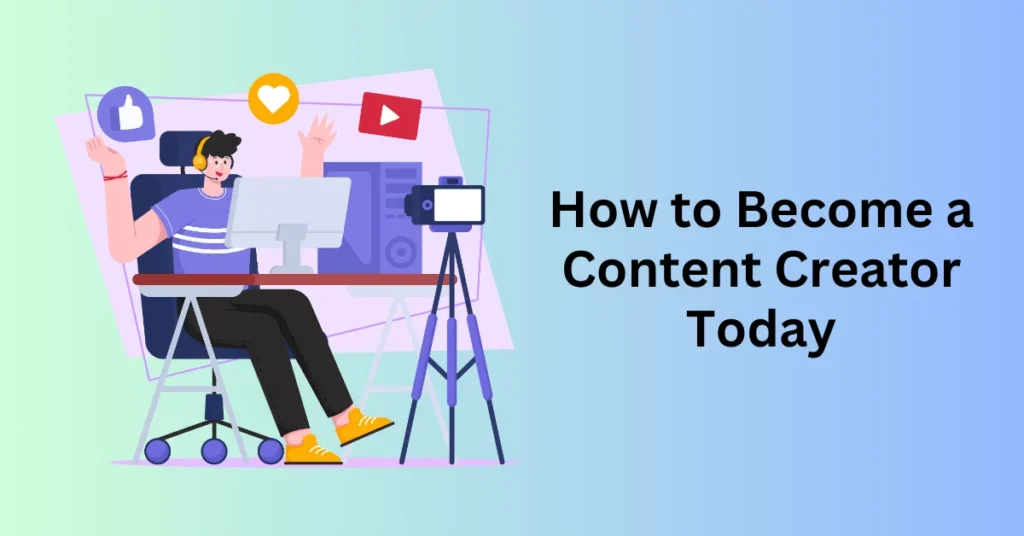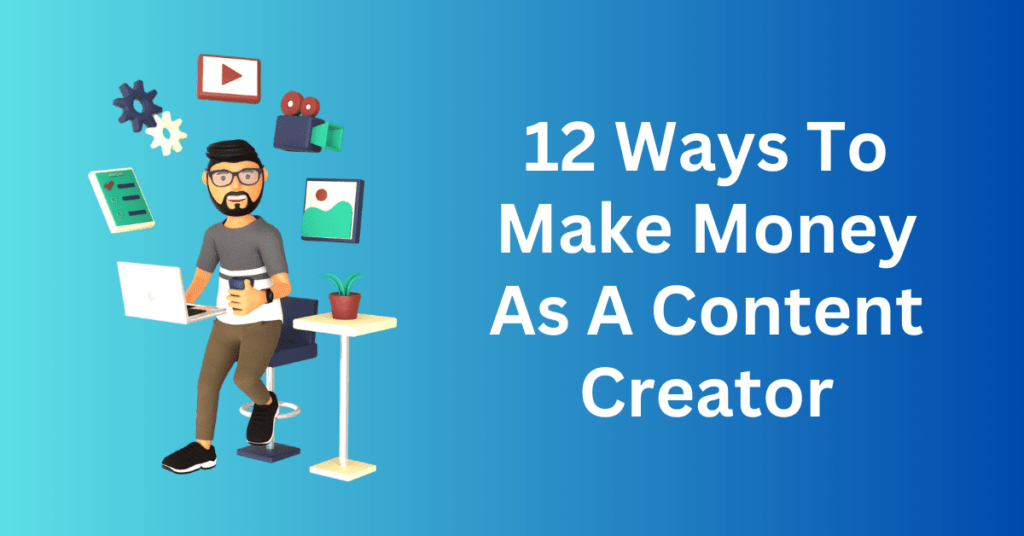Over the past decade, content creation has undergone a remarkable transformation, evolving from a casual hobby into a full-fledged career. This shift has been made possible thanks to platforms like YouTube, Instagram, TikTok, and blogging. With these tools at your fingertips, anyone with a creative idea and the right equipment can now be a content creator and share their voice with the world. Whether it’s through videos, blog posts, or social media content, the opportunities for aspiring creators are virtually limitless.
If you’ve ever found yourself thinking, “I should really start making videos,” then 2025 might just be the perfect time to take the leap. Of course, stepping into the spotlight can feel intimidating at first. However, the only real obstacles standing between you and your goals could be investing in a ring light and overcoming a few moments of initial awkwardness in front of your camera. Fortunately, you don’t need to go viral to succeed as a professional content creator. Instead, what matters most is maintaining consistency, nurturing your creativity, and embracing imperfections—whether it’s a missed beat in a TikTok dance or the rough edges of a beginner blog post.
For those interested in blogging, platforms like WordPress, especially when paired with self-hosting, remain among the best options for establishing a lasting online presence. Blogging provides an opportunity to carve out your unique space in the digital world. Moreover, with the right strategies in place, it can become a powerful tool for growth and monetization.
Why Become A Content Creator?
At its core, content creation revolves around sharing meaningful, captivating, or enjoyable material with an audience through digital channels. This can take many forms, such as blog posts, podcast episodes, YouTube videos, or Instagram reels. Whether it’s solving problems, sharing stories, or offering inspiration, content creator build connections with their audiences in ways that foster both engagement and loyalty.

Historically, content creation was seen primarily as a hobby, but it has rapidly evolved into a legitimate career path. As digital platforms expand, so do the opportunities for creators to transform their passions into profit, cultivate loyal communities, and establish their personal brands. This shift has opened doors for people from all walks of life to turn their creative pursuits into sustainable livelihoods.
One of the most appealing aspects of content creation is its versatility. Whether you enjoy writing, recording, designing, or producing, you can tailor your efforts to align with your unique strengths. By selecting a niche that resonates with your target audience, you can quickly start building meaningful connections. Content creation isn’t just about uploading videos or publishing blog posts; it’s about sharing what genuinely matters to you and your community.
Moreover, brands are increasingly recognizing the power of content creator. Collaborating with influencers allows companies to build authentic relationships with their audiences while engaging customers in more meaningful ways. In fact, research shows that 89% of marketers believe influencer marketing delivers a better return on investment than other channels. This highlights the growing value of content creation, not just for individuals, but for businesses aiming to reach their audiences in impactful ways.
If you’re still on the fence about whether content creation is right for you, consider these additional benefits:
Unleash Your Creativity as a Content Creator
Content creation gives you the freedom to express yourself in your unique voice. Whether you have stories, ideas, or life experiences to share, there’s an outlet for it through writing, video, or social media. The best part? You don’t need to be perfect. Audiences are drawn to authenticity, not perfection.
Build a Personal Brand as a Content Creator
Becoming a content creator means starting your own digital presence. As you develop your content and connect with people, you’re simultaneously building a personal brand. This brand can be shaped around your passions, interests, and the things that excite you most. It’s your space to be real and share your unfiltered self with the world.
Enjoy the Flexibility as a Content Creator
One of the biggest perks of content creation is the flexibility it offers. You get to choose when and where you work. Whether it’s taking a day off or working from a local coffee shop, you’re in charge of your schedule. This level of freedom allows you to work on your own terms and enjoy a lifestyle that suits you.
Turn Passion into Profit as a Content Creator
Content creation isn’t just about fun and creativity—it can also be a lucrative career. Through various monetization methods like ads, sponsorships, content marketing, and selling products, you have numerous ways to earn money. It’s not always easy, but with dedication, your hobby can become a reliable source of income.
- Ad Revenue: Platforms like YouTube share advertising profits with creators.
- Sponsorships: Work with brands on paid promotional content.
- Affiliate Marketing: Earn commissions by recommending products to your audience.
- Merchandise Sales: Sell your own branded products or services.
As a digital content creator, you have the power to make an impact. Whether you’re educating, entertaining, or inspiring, your content can have a meaningful effect on people’s lives. Creating a community that resonates with your message can be deeply fulfilling and rewarding.
Becoming a content creator is not only about building a career; it’s about using your voice, your talents, and your passions to connect with others, make an impact, and ultimately live life on your own terms.
What Type of Content Can You Create?

The possibilities for content creation are virtually limitless. Whether you’re drawn to writing, speaking, or visual storytelling, there’s always a medium where you can showcase your talents and connect with others. Here’s a look at some of the most popular types of content you can create:
1. Blogging
Blogging remains one of the most widely used and accessible content formats. If you have a passion for writing and enjoy sharing your thoughts, experiences, or knowledge, starting a blog is an ideal way to engage an audience. Bloggers create content on a wide range of topics, from personal stories and lifestyle advice to deep-dive guides and expert insights. The beauty of blogging lies in its flexibility—you have the freedom to write about whatever excites you, whether that’s travel, fashion, technology, self-improvement, or something else.
To get started on the right foot, Bluehost WordPress Hosting offers all the tools you need to launch and grow your blog. With its affordable and competitive pricing structure, Bluehost combines multiple essential functionalities, such as web hosting, email marketing, and design tools, in one platform. This makes it the perfect choice for content creator looking to streamline their workflow while maintaining a high-quality online presence. Bluehost’s WordPress Content Creator Solution is an all-in-one package, offering everything from web hosting to email marketing and powerful design tools.
Additionally, CreativeMail, an integrated email marketing solution by Bluehost, enables bloggers to engage their audiences directly through newsletters and promotional campaigns. You can easily share blog posts, videos, or special offers, while also driving more traffic to your site.
Popular Platforms for Bloggers
- WordPress: The most popular platform for blogging, offering flexibility and customization.
- Medium: A platform focused on writers and thought leaders.
- Blogger: A simple, user-friendly option for beginners.
Helpful Tools for Bloggers
- Grammarly: This tool ensures your writing is clear and professional by checking grammar, punctuation, and style.
- Canva: Perfect for creating eye-catching graphics, blog headers, and visuals that complement your written content.
- Yoast SEO: Boost your blog’s visibility and search engine ranking with Yoast, a powerful SEO plugin for WordPress.
- Hemingway Editor: Improve the readability of your posts by simplifying sentence structure and improving clarity.
Blogging offers endless opportunities to share your voice, build a personal brand, and connect with readers who value your expertise. Whether you’re a seasoned writer or just getting started, there are tools and platforms available to help you succeed.
2. Vloggers
If you’re more inclined toward video and storytelling, YouTube is a great platform for you. Vloggers can create a wide range of content, including tutorials, personal vlogs, reviews, and entertainment videos. Video content allows for deeper audience connection, offering a more personal touch by showcasing your personality and directly engaging with your viewers. With millions of people tuning in daily, the potential for growth as a vlogger is immense.
Popular Platforms for Vloggers
- YouTube: The go-to platform for video content creation.
- TikTok: A platform for short-form video content with massive viral potential.
- Twitch: Popular for live streaming and gaming content, but also expanding into other areas like creative arts and casual vlogging.
Essential Tools for Vloggers
- Adobe Premiere Pro: Industry-standard video editing software, packed with advanced features for professional-level editing.
- Final Cut Pro: Ideal for Mac users, offering high-end editing features and intuitive controls.
- Canva: Perfect for creating engaging video thumbnails and other visual elements that complement your videos.
- TubeBuddy: A YouTube tool to help with SEO optimization, managing tags, and analyzing channel performance, all aimed at boosting your channel’s growth.
3. Influencers
Influencers are the social media stars who leverage their platforms to promote products, services, or causes they care about. Whether on Instagram, TikTok, or Twitter, influencers build trust and authenticity with their followers by offering relatable content. If you’re passionate about a niche, becoming an influencer can allow you to share your expertise while monetizing your audience through brand partnerships, sponsored posts, and affiliate marketing.
Popular Platforms for Influencers
- Instagram: Ideal for visually-driven content, including photos and stories.
- TikTok: A fast-growing platform for short, engaging video content.
- Twitter: Great for quick updates, news, and discussions with followers.
- LinkedIn: Perfect for professionals looking to establish authority in their industry.
Key Tools for Influencers
- Canva: Excellent for creating eye-catching social media posts, stories, and ads.
- Later: A social media scheduling tool that allows you to plan and schedule Instagram and TikTok posts ahead of time.
- Hootsuite or Buffer: Platforms that help with scheduling, managing, and tracking social media posts across various networks.
- BrandSnob or Upfluence: Tools that facilitate collaboration with brands for sponsored content or influencer partnerships.
4. Podcasters
Podcasts are currently experiencing a surge in popularity. If you enjoy sharing your thoughts, interviewing guests, or diving deep into a topic, starting a podcast could be the perfect way to engage with an audience. Podcasts are incredibly flexible, allowing listeners to tune in while on the go—whether they’re driving, working, or exercising. With podcast consumption growing rapidly, it’s an exciting time for creators in this field.
Popular Platforms for Podcasters
- Spotify: One of the leading podcast platforms, known for its massive audience.
- Apple Podcasts: A highly popular podcast platform for iOS users.
- Podbean: A podcast hosting platform with powerful tools for creators.
- Anchor: A free podcasting platform that simplifies the recording and distribution process.
Podcasting Tools
- Audacity: A free, open-source audio editing software that’s perfect for beginners and pros alike.
- Adobe Audition: A professional-grade audio editing tool designed for advanced podcasters.
- Canva: Ideal for creating custom podcast covers, promotional images, and social media graphics.
- Auphonic: An audio processing tool that enhances sound quality by improving levels, reducing noise, and optimizing audio.
Career Opportunities Within Content Creation
Content creation offers a wide array of career opportunities. Many full-time creators generate revenue through ads, brand deals, sponsorships, and merchandise sales. Others might use content creation as a side hustle to supplement their income. Some creators even expand their income streams by offering paid courses, writing books, creating video scripts, or providing consulting services in their area of expertise.
Brands are increasingly realizing the value of partnering with content creator to promote their products. Companies are turning to influencer marketing, sponsored content, and affiliate marketing to reach new audiences. By monetizing your content through these methods or directly collaborating with brands, you can turn your creative passions into a sustainable career. The possibilities are endless, and the growth potential in this field is immense. Whether you’re a full-time creator or just getting started, there are numerous paths to success in the content creation world.
Step-by-Step Guide to Becoming a Successful Content Creator

If you’ve decided to take the plunge into content creation, now is the perfect time to get started. The demand for fresh, valuable content is ever-growing, and the platforms are ready to help you build your presence. In today’s digital world, your audience is out there waiting for your unique voice. This step-by-step guide will help you not only become a content creator but also establish a personal brand that resonates and grows over time.
Now that you have the big picture in mind, let’s dive into the details!
Step 1: Choose Your Niche as a Content Creator
Choosing your niche is undoubtedly one of the most important decisions you’ll make as a content creator. In fact, a clear and well-defined niche serves as the foundation of your brand while helping you attract an engaged audience. By narrowing your focus to a specific topic or area of interest, you can create content that resonates deeply with the people most likely to connect with your message. Consequently, this focused approach increases your chances of building a loyal and active community.
To begin assessing your interests and market demand, start by reflecting on what excites and inspires you. Then, think about your strengths and skills—what are you particularly good at? After identifying these areas, take the next step by researching online demand for your chosen topic. Explore what people are actively searching for and discussing. For example, if fitness is your passion but you’re still a beginner, you could focus on creating content about beginner workouts or wellness tips.
As you narrow down your niche, keep a few key tips in mind to guide your decision. First, align your passion with purpose. Choose a topic that excites you while offering room for growth and deeper exploration. Additionally, evaluate audience demand by analyzing whether there is an active community around your niche.
Fortunately, several tools can assist you in refining your niche. For example, Google Trends is invaluable for identifying current trends and determining the popularity of your area of interest over time. Likewise, social media platforms such as Instagram, Twitter, and YouTube can offer valuable insights into what people are engaging with and discussing. Furthermore, tools like AnswerthePublic can reveal common questions and concerns within your niche, helping you uncover pain points and opportunities to create meaningful and impactful content.
Step 2: Define Your Target Audience
Once you’ve chosen your niche, the next step is to define your target audience. By understanding your audience’s interests, challenges, and needs, you can craft messages that connect with them on a deeper level and inspire loyalty. Transitioning from a broad niche to a clearly defined audience ensures your content speaks directly to the right people.
To identify your ideal audience, start by envisioning the person who would benefit most from your content. For example, consider demographic factors such as age, gender, location, education, and occupation. Then, take it a step further by exploring psychographics, which includes their interests, values, lifestyle choices, and behaviours. Additionally, reflect on their pain points and needs—what specific challenges or goals can your content help them address? These insights will help you build a detailed profile of your target audience.
Researching your audience is a key step in gaining these insights. To begin, leverage social media platforms, which offer built-in analytics tools providing valuable data on what your followers engage with the most. For a more direct approach, consider conducting surveys to ask your audience about their interests, struggles, and preferences. Engaging in online communities, such as Reddit, Facebook Groups, or Quora, is another excellent way to observe what people in your niche are actively discussing.
To gain a deeper understanding of your audience’s behaviour, pay close attention to engagement metrics. For instance, track likes, shares, comments, and click-through rates to pinpoint the type of content that resonates most. Additionally, listen carefully to direct feedback through comments, messages, and emails to learn what your audience appreciates or wants more of. Finally, stay flexible and adapt your content based on emerging trends and the formats—such as blog posts, videos, or podcasts—that receive the most attention.
Step 3: Setting Up Your Content Creation Tools and Platforms
After identifying your niche and audience, the next crucial step is setting up the right tools and platforms for content creation. A well-equipped workspace and effective platforms not only streamline your production process but also enhance your content’s reach and quality. Whether you’re vlogging, blogging, podcasting, or creating graphics, having the right setup can give you a professional edge and ensure you can deliver the best experience to your audience.
Here’s a breakdown of the tools you’ll need for different types of content creation:
Necessary Tools for Different Types of Content
- Video Editing Tools:
To create polished, professional videos, invest in tools like iMovie, Adobe Premiere Pro, or Final Cut Pro. These offer powerful editing capabilities, effects, and features to elevate your video content.- iMovie: Easy to use, great for beginners and basic video edits.
- Adobe Premiere Pro: Industry-standard, with advanced features for professionals.
- Final Cut Pro: A go-to for Mac users with powerful editing tools and effects.
- Photo Editing Tools:
High-quality visuals are key to making an impact. Canva and Photoshop are excellent choices for creating eye-catching images and graphics.- Canva: User-friendly, perfect for beginners and creating engaging visuals for blogs, social media, and more.
- Photoshop: Ideal for professional-grade photo manipulation and advanced editing.
- Blogging Tools:
If you’re planning to write blogs, WordPress is a popular and highly customizable platform. Pair it with Yoast SEO for better search engine optimization.- WordPress: Flexible and scalable for bloggers of all levels.
- Yoast SEO Plugin: Essential for boosting your blog’s search engine ranking and driving organic traffic.
- Podcasting Tools:
For crisp, clear audio, consider using Audacity or GarageBand. These tools offer excellent features for editing podcasts and sound design.- Audacity: A free, open-source tool with all the features you need to edit audio.
- GarageBand: A Mac-exclusive tool with an easy-to-use interface for podcast editing.
Basic Tools to Get Started
Even if you’re just beginning, investing in some basic tools can make a big difference in the quality of your content:
- Camera:
Start with a high-quality smartphone camera, which can work wonders for beginner creators. As you progress, you might want to invest in a DSLR or mirrorless camera for better video quality. - Microphone:
A clear, crisp sound is essential, especially for YouTube videos or podcasts. Invest in a quality microphone like a USB condenser mic to get professional sound without breaking the bank. - Lighting:
Good lighting enhances video quality drastically. Natural light is great if you’re shooting during the day, but for consistent results, consider an affordable ring light, which can brighten up your face for clear, professional-looking shots. - Design Tools:
Canva is a versatile tool for creating social media graphics, YouTube thumbnails, and other visuals. As you get more advanced, tools like Photoshop or Illustrator can offer even more control over your designs.
Setting Up Your Website
When you’re ready to expand your reach and create a home for your content, setting up a professional website is key. Bluehost WordPress Solution is an excellent choice for beginners and seasoned content creator alike.
- WordPress by Bluehost:
WonderBlocks is a powerful tool that simplifies website design for creators. It allows you to easily build and customize your site using pre-designed content blocks, making it easy to create visually appealing posts and landing pages without extensive design experience. This helps maintain a professional appearance while streamlining your workflow. - All-in-One Solution:
Bluehost offers a comprehensive suite of tools for creators, including web hosting, email marketing, and design tools, all in one package. It’s perfect for growing your online presence with minimal effort.
Choosing the Best Platform for Your Niche
The platform you choose should align with your niche and the type of content you create. Understanding where your audience spends their time is key to maximizing your reach.
- Short-Form Video:
If you love creating quick, engaging content, platforms like TikTok and Instagram are perfect for reaching a large audience. These platforms are designed for short videos that capture attention fast. - Long-Form Content:
If you’re more into detailed, long-form content like tutorials, reviews, or storytelling, YouTube or blogging might be a better fit. YouTube offers a space for in-depth video content, while blogging gives you room to explore topics with written depth.
Step 4: Develop Consistent and Engaging Content
Consistency is key to building a loyal and engaged audience. The more frequently and reliably you post valuable content, the more your audience will return for more. Without consistency, your audience might lose interest, so it’s important to develop a routine and maintain engagement over time.
Creating content that resonates and keeps your audience interested requires a strategy. Here’s how you can develop high-quality content that keeps followers coming back:
1. Create a Content Calendar
A content calendar is an essential tool that helps you stay on track and ensure you’re posting consistently. By planning your posts in advance, you can manage your content creation without the stress of last-minute planning. Tools like WonderSuite provide guided onboarding to streamline your content planning and posting, while Jetpack Forms helps capture ideas and feedback from your audience. By scheduling your blog drafts, social media posts, and video scripts, you can work more efficiently and ensure you’re never scrambling for content.
- Weekly or Monthly Planning:
Set aside time each week or month to plan your content. This will help you stay organized, track deadlines, and ensure a steady flow of material.
2. Choose the Right Content Formats for Your Platform
Different platforms are better suited to different content formats. Tailoring your content to the platform ensures you maximize its impact and engagement.
- Videos:
Videos are perfect for platforms like YouTube and TikTok, where viewers expect fast-paced, visual content. Whether you’re creating tutorials, vlogs, or entertainment, make sure your video is well-edited and visually appealing. - Blog Posts:
Blog posts are great for attracting organic traffic through SEO. Long-form content allows you to go deeper into topics and rank higher on search engines. Optimize your blogs with keywords, headings, and meta descriptions to enhance their visibility. - Podcasts:
Podcasts offer a more intimate experience for your audience. They’re great for long-form content and building deeper connections with listeners. Podcasts allow you to dive into niche topics and have meaningful conversations with guests or your audience.
3. Tips for Creating High-Quality Content
Creating content that resonates and captivates your audience is an ongoing process. Here are some tips to ensure your content is always top-notch:
- Video Tips:
- Ensure clear audio: Audio quality is crucial for keeping viewers engaged.
- Use good lighting: Proper lighting enhances your video’s professionalism and clarity.
- Focus on concise editing: Trim any unnecessary footage and keep videos engaging from start to finish.
- Writing Tips:
- Use storytelling: Make your content relatable and engaging by telling a story.
- Break up long paragraphs: Use shorter paragraphs to make reading easier and more digestible.
- Use headings and bullet points: These help your content flow better and make it scannable for your audience.
- Engagement Tips:
- Ask questions: Encourage your audience to share their thoughts in the comments.
- Encourage interaction: Respond to comments, run polls, and keep the conversation going.
- Share call-to-actions: Encourage your audience to like, share, or comment to boost interaction and visibility.
4. Track Performance with Analytics
Understanding what works and what doesn’t is critical to refining your strategy. Use analytics tools to track the performance of your content and gauge audience engagement.
- YouTube Analytics: Provides insights into viewer demographics, engagement rates, and watch time, helping you optimize your video content.
- Google Analytics: Helps track your website’s traffic, bounce rates, and user engagement, enabling you to fine-tune your blogging strategy.
- Instagram Insights: Shows how your posts perform on Instagram, offering valuable data on your followers’ behavior and engagement levels.
Based on these insights, adjust your strategy accordingly to focus on the types of content that are performing best.
Step 5: Growing Your Audience and Gaining Followers
Now that you’ve crafted great content, the next challenge is growing your audience and getting noticed. Building a dedicated and engaged following takes time, strategy, and consistent effort. Here’s how you can accelerate your growth:
1. Organic Growth Strategies
To attract new followers, it’s essential to ensure that people can easily find your content. Optimizing your content for discoverability is a crucial step in achieving growth.

One effective strategy is search engine optimization (SEO), which can significantly enhance the visibility of your blogs and videos. By incorporating relevant keywords, crafting compelling meta descriptions, and using descriptive alt texts, you can make your content more accessible on search engines. Tools like Yoast SEO for blogs and TubeBuddy for YouTube can help streamline this process and improve your SEO strategy.
On social media, hashtags play a vital role in extending the reach of your content. Platforms like Instagram and TikTok thrive on trending and niche-specific hashtags, which can expose your posts to a broader audience. To maximize your visibility, research the hashtags that are popular or relevant to your niche and incorporate them into your content.
2. Collaborations and Cross-Promotion
One of the quickest ways to grow your audience is through collaboration. Working with other creators allows you to tap into their audience, expand your reach, and build valuable relationships within your niche.
Partnering with fellow content creator can expose your work to a new audience while providing value to their followers. Consider collaborating on guest posts, co-hosting podcasts, or creating joint videos that appeal to both audiences. These partnerships help introduce you to people who are likely to find your content interesting and engaging.
Another effective strategy is cross-promotion. Share each other’s content across your respective social media platforms to increase visibility. For example, if you create a YouTube video, share it on Instagram and encourage your followers to explore your collaborator’s profile. This approach helps both creators gain exposure to new communities, fostering mutual growth.
3. Building Social Proof
Social proof is an incredibly powerful tool for building trust and encouraging people to engage with your content. When others interact with and recommend your material, it naturally becomes more appealing to potential followers. As a result, social proof not only fosters growth but also enhances your credibility in the eyes of your audience.
One effective way to leverage social proof is by gathering testimonials from your followers, customers, or peers. Positive feedback from real people can significantly boost your credibility while attracting new followers. To maximize the impact, share these testimonials across your platforms, such as social media, your website, or email campaigns, to highlight the value your content provides.
In addition to testimonials, encouraging user-generated content (UGC) is another impactful strategy. For example, invite your audience to create content inspired by your work, such as reviews, social media posts, or creative projects. UGC not only builds trust but also acts as free promotion for your brand. Furthermore, sharing this content on your platforms demonstrates your appreciation for your community and strengthens engagement by showcasing how your audience interacts with your brand.
Equally important is the need to build a strong, engaged community, as this plays a vital role in fostering growth. When people see others actively participating in your content, they’re more likely to join in themselves. To facilitate this, create spaces where your audience can interact, such as discussion threads, live Q&A sessions, or dedicated social media groups. These opportunities allow them to ask questions, share their thoughts, and connect with like-minded individuals. By fostering a sense of belonging and mutual support, you can strengthen your community while reinforcing your credibility through the power of social proof.
4. Building an Email List or Community Off-Platform
While social media is essential for growing your audience, building a dedicated community off-platform is equally crucial for deepening relationships and maintaining consistent engagement with your followers. In fact, having a private space for your audience fosters a stronger sense of connection and loyalty, which is vital for long-term success.
Platforms like Patreon and Discord offer unique opportunities to create a more personal and interactive environment for your community. By providing exclusive content, early access to new material, or other valuable incentives, you can encourage your most dedicated fans to join and stay engaged. These platforms, unlike public social media channels, enable direct and meaningful engagement, helping you cultivate a closer-knit community that feels more connected to your brand.
Additionally, capturing leads and gathering feedback is a crucial strategy for connecting with your audience on a deeper level. Tools like Jetpack Forms make it easier to collect feedback, ideas, and contact information from your followers. By building an email list, you can communicate directly with your audience, keeping them informed about content updates, promotions, or community-building activities. This direct line of communication ensures that you maintain strong relationships with your followers, even outside of social media platforms, providing a more personal touch to your overall engagement strategy.
5. Consistent Engagement
Engagement is the key to retaining and growing your audience. Respond to comments, ask questions, and show appreciation for your followers. Make sure to acknowledge and interact with your audience to build a loyal, invested community.
Step 6: Turning Your Passion into Profit: Monetization Strategies
With an engaged audience, it’s time to start generating income from your content. There are numerous ways to monetize your online presence, and choosing the right strategy can significantly enhance your earning potential. A great starting point is leveraging a reliable hosting platform like Bluehost with WordPress. This allows you to create a professional website where you can sell digital products, services, or even subscriptions to your audience.
Here are some top monetization avenues to explore:
- Ad Revenue: Using platforms like AdSense, you can place ads on your blog or YouTube videos, earning money as visitors interact with them.
- Sponsorships & Affiliate Marketing: Partner with brands that fit your niche, incorporating their products into your content. You can promote these products via sponsored posts or affiliate links, earning a commission when someone makes a purchase.
- Selling Products & Services: Consider offering online courses, e-books, digital downloads, or even merchandise tailored to your audience.
- Attracting Sponsors: To attract sponsorships, focus on building a solid content portfolio and actively pitch to brands that align with your values and target market. Companies are seeking creators who engage their audience and can drive interest in their products.
- Diversify Your Income: Expanding your revenue sources can make a huge difference. For example, memberships or subscription services, launching your own product line, or offering paid consultations can all contribute to building multiple income streams.
Affiliate marketing programs can be a game-changer for content creator. Using tools like YITH WooCommerce Affiliates, you can easily manage and grow your affiliate program, letting others promote your products while you earn passive income.
Step 7: Navigating Challenges and Staying Consistent
Building a successful online presence is undoubtedly a rewarding journey, but it also comes with its fair share of challenges. From burnout and self-doubt to creative fatigue, these obstacles can feel overwhelming at times. However, with the right strategies in place, you can overcome these difficulties and continue moving forward with confidence.
Burnout, for instance, often arises from overextending yourself or trying to do too much at once. To prevent this, consider batching your content in advance or scheduling regular breaks to recharge. By taking time off, you can maintain your creative energy and avoid the exhaustion that comes from constantly being “on.” Additionally, structured downtime helps you return to your work with a fresh perspective.
Similarly, imposter syndrome is a common challenge, especially when you find yourself comparing your journey to others. Instead of measuring your success against someone else’s, focus on your unique progress and accomplishments. Remember, every creator’s path is different, and success takes many forms. Shifting your mindset in this way can help you stay motivated and confident in your abilities.
Another common challenge is the overwhelm that accompanies tackling large projects. To manage this, break these projects into smaller, more manageable tasks. This approach makes the process less daunting and helps you maintain a sense of achievement as you complete each step. Additionally, setting realistic, measurable goals—whether weekly or monthly—provides clarity and a clear sense of direction, ensuring you stay focused and on track.
Finally, inspiration can come from a variety of sources. Whether you draw ideas from nature, books, podcasts, other creators, or even your personal experiences, these moments of inspiration can breathe new life into your content. Sometimes, taking a short break to reset your mind is all you need to return to your work with renewed energy and perspective.
Step 8: Advanced Tips for Elevating Your Content Game
You’re on a roll, but now it’s time to push your content to new heights. Building your personal brand extends beyond just creating content on your primary platform. Consider expanding your influence by publishing a book, hosting a podcast, or even speaking at industry events.
Networking is essential for growth. Collaborate with other creators and industry leaders to open doors to new opportunities. Stay ahead of trends and constantly refine your skills through workshops and learning experiences.
To grow your audience even further, consider optimizing your content for SEO, especially on video platforms like YouTube. SEO will help you get discovered by a wider audience and increase your reach.
Paid ads can also be a useful tool for boosting your visibility. However, it’s essential to ensure that your content is conversion-ready before investing in paid promotions. When your content resonates with your audience, it will naturally lead to higher engagement and better results.
5 Habits of Successful Content Creator

The most successful content creator share several habits that contribute to their growth and sustainability. If you’re aspiring to be a successful creator, these key habits should be at the top of your list. Let’s explore how adopting these practices can help you attract and retain your audience.
1. Consistency
One of the foundational habits of successful content creator is maintaining a regular posting schedule. Consistency builds momentum, strengthens trust, and keeps your audience engaged. It ensures that your presence remains visible and that followers can rely on fresh content at regular intervals. The more consistent you are with your content, the more likely you are to foster lasting connections with your audience. If scheduling posts feels overwhelming, tools like Hootsuite and Buffer can help you plan and automate your posts in advance.
2. Strategic Self-Promotion
While promoting your content is essential, successful creators know how to do it without overwhelming their audience. They use platforms like social media, collaborations, and email newsletters to subtly boost visibility. Effective self-promotion is about getting noticed in a way that feels organic and adds value to your audience, rather than constantly pushing sales pitches or spammy content.
3. Adaptability
The digital landscape is constantly changing, and successful content creator are always adaptable. They embrace new trends, adjust to platform algorithm updates, and experiment with different content formats. Staying flexible means that you can pivot when necessary, experiment with new ideas, and continually figure out what resonates most with your audience, while ensuring that your content stays fresh and relevant. Diversifying your content across multiple platforms, such as YouTube or a blog, also reduces reliance on any single platform’s algorithm changes.
4. Creative and Business-Oriented Mindset
Successful creators know how to balance their creative passion with a business mindset. They treat their content creation efforts as a business, combining creativity with strategic growth, branding, and monetization plans. This approach allows creators to scale their work effectively, build a sustainable brand, and keep growing their income streams while staying true to their creative vision.
5. Commitment to Continuous Learning
The most successful content creator understand that staying ahead of the curve requires ongoing learning and growth. Whether it’s refining their skills, experimenting with new tools, or staying updated on industry trends, lifelong learning is a cornerstone of success. This commitment to improvement allows creators to remain relevant, innovative, and prepared for new opportunities, giving them an edge in the competitive world of content creation.
Final Thoughts: Ready to turn your passion into a career?
Content creation has evolved from a hobby to a viable career, and there’s no better time than now to dive in. Each piece of content you create is a step toward growth, and the more you produce, the more you’ll improve. Don’t let the pursuit of perfection slow you down—start creating and embrace the learning process.
If you’re serious about turning your passion into a career, having the right platform is essential. The Bluehost WordPress Content Creator Solution is specifically tailored to meet the needs of creators like you. WordPress provides the flexibility and powerful tools necessary for scaling your content, while Bluehost’s easy setup and reliable hosting ensure that the technical side of your site is handled seamlessly.
Bluehost offers a range of WordPress hosting plans designed for content creator, whether you’re just starting or have more advanced needs. Their solutions allow you to focus on what matters most—creating great content—while they manage the backend technicalities. Let Bluehost power your website so you can focus on sharing your passion with the world.


